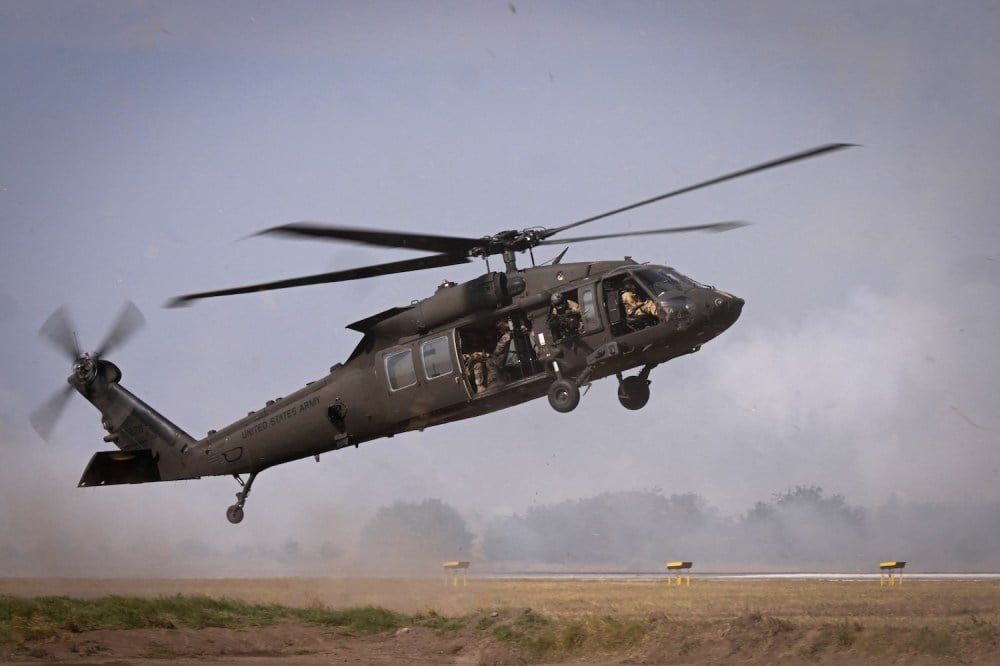The United States announced Wednesday that it will withdraw several thousand troops from Europe, a move that has sparked concern among top Republicans in Congress amid ongoing U.S. efforts to manage Russia’s invasion of Ukraine.
The move specifically affects the 101st Airborne Division’s 2nd Infantry Brigade Combat Team, which is based in Fort Campbell, Kentucky. It arrived in Europe in January on a rotational deployment, taking the place of other U.S. Army units. Its forces in Europe number around 3,000, and it is expected to fully return to the United States by late November, according to U.S. Army Europe spokesperson Terry Welch. Under the newly announced plan, the soldiers will not be replaced.
The brigade is stationed across Romania, Slovakia, Hungary, and Bulgaria, according to the Romanian Defense Ministry. All four countries either border Ukraine or the Black Sea, a battleground between Ukraine and Russia. The United States will still keep some other troops in Romania, though, including soldiers from the 3rd Infantry Division.
The headquarters for the U.S. Army forces in Europe said in a statement that the move was made to “ensure a balanced U.S. military force posture” and reflected Europe’s increased “capability and responsibility.”
Troops leaving Romania include those based at Mihail Kogalniceanu Air Base, according to Romania. In 2024, Romania began upgrading the base at an estimated cost of $2.7 billion. The United States maintains other brigades in Germany and Italy, including an Infantry Brigade Combat Team that is permanently stationed in Vincenza, Italy.
The United States also has combat troops in Poland and Estonia, two states that border Russia. Polish Deputy Prime Minister Wladyslaw Kosiniak-Kamysz said Poland had “not received any information” that U.S. troops would be withdrawn.
Republicans leading the Senate and House Armed Services Committees criticized the move, calling it “directly at odds with the President’s strategy.” On Oct. 9, U.S. President Donald Trump had said that the United States had no plans to withdraw troops from Europe.
“Pulling back U.S. forces from NATO’s Eastern flank prematurely, and just weeks after Russian drones violated Romanian airspace, undermines deterrence and risks inviting further Russian aggression,” U.S. Sen. Roger Wicker, the chairman of the Senate Armed Services Committee, and Rep. Mike Rogers, chairman of the House Armed Services Committee, wrote in a joint statement.
Wicker and Rogers also highlighted Romania’s investments in hosting U.S. forces and said Congress had not been consulted ahead of the decision. The Defense Department informed Congress of the withdrawal on Friday, according to two U.S. congressional staffers, who were granted anonymity to discuss the move.
The Defense Department “is going to argue that this is a fairly small element, and therefore it shouldn’t be a big deal, but it’s an absurd argument. It’s 20 percent of our combat power in Europe,” said one staffer. “It’s just tone-deaf.”
Wicker and Rogers also appeared to imply that the decision was made without broad consultation within the U.S. government: Congress “will not accept significant changes to our warfighting structure that are made without a rigorous interagency process, coordination with combatant commanders and the Joint Staff,” Wicker and Rogers wrote.
Secretary of State Marco Rubio welcomed Romanian Foreign Minister Oana Toiu to Washington for a meeting on Oct. 9, during which Rubio “recognized Romania’s work to meet defense spending commitments,” according to the State Department.
The State Department declined to comment on whether it had been involved in the planning process prior to the Defense Department’s announcement. On Wednesday, U.S. Ambassador to NATO Matthew Whitaker posted that “the United States remains committed to Romania.”
The post The U.S. Is Withdrawing Some Troops From Eastern Europe appeared first on Foreign Policy.




